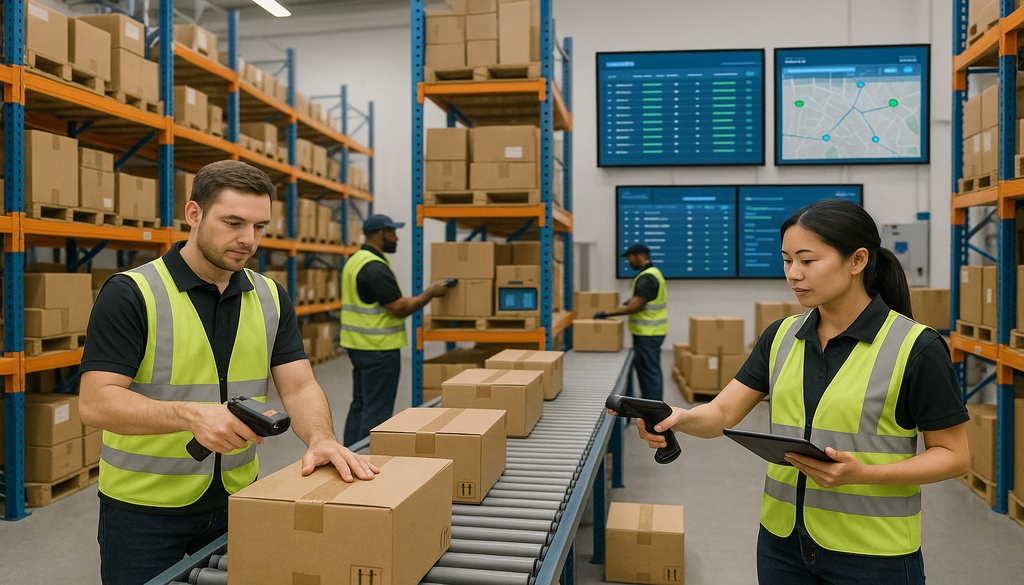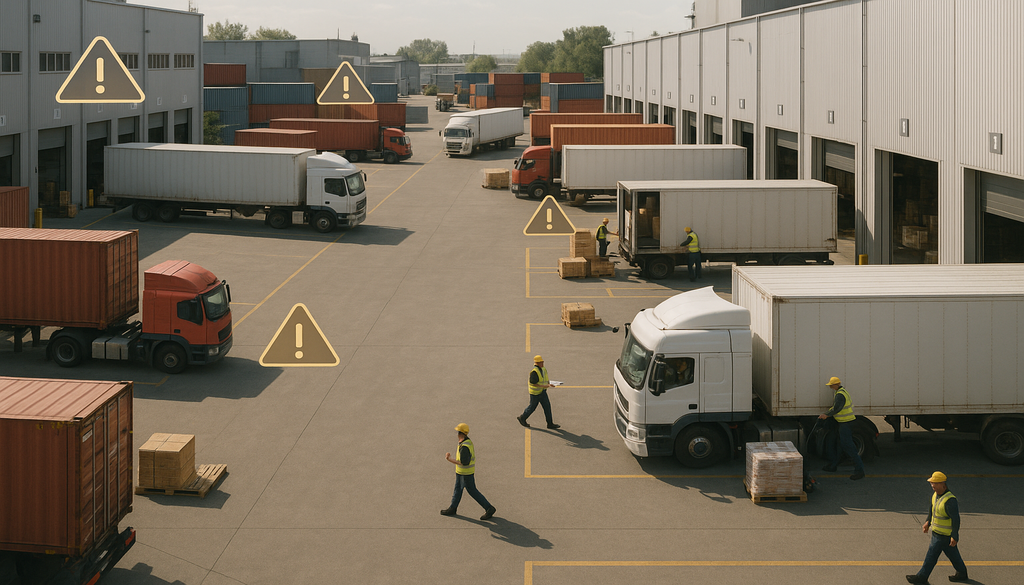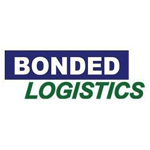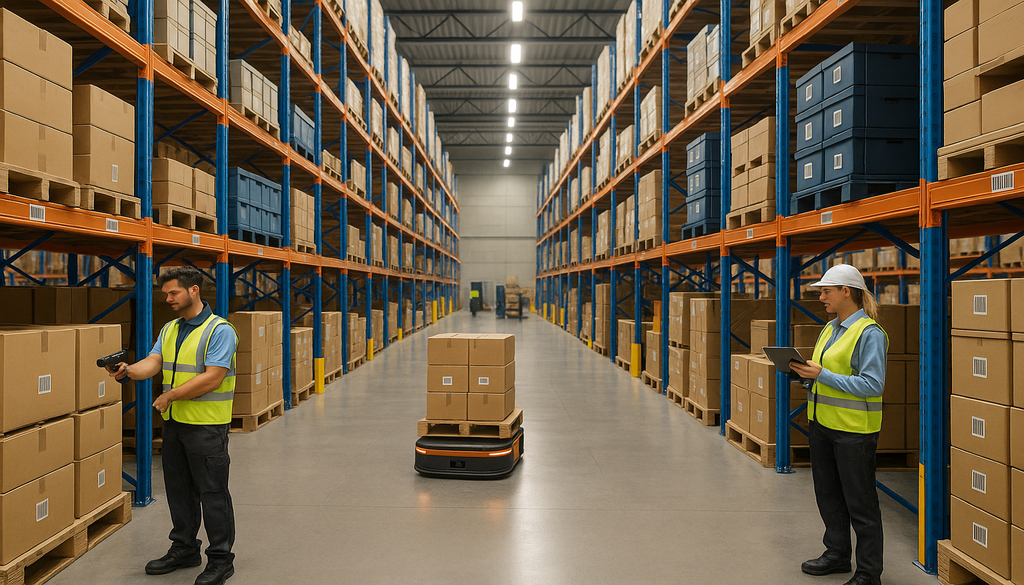Effective Distribution Management for 3PLs: Key Strategies & Challenges
Introduction
In the dynamic world of logistics and supply chain management, distribution management stands as a cornerstone for third-party logistics providers (3PLs). As the demand for efficient and reliable delivery services grows, mastering distribution management becomes crucial for 3PLs aiming to enhance their logistics, shipping, and inventory management practices. This comprehensive guide delves into the essential strategies and common challenges faced by 3PLs in distribution management. By exploring these critical aspects, logistics professionals can gain insights into optimizing their operations and staying competitive in an ever-evolving industry.
Understanding Distribution Management in the Context of 3PLs
Distribution management in the realm of 3PLs involves the systematic coordination of activities required to move goods from suppliers to end customers. It encompasses a range of processes, including order fulfillment, warehousing, inventory management, and transportation. The importance of distribution management in the 3PL sector cannot be overstated, as it directly impacts the overall efficiency of the supply chain. Effective distribution management ensures that products are delivered on time, in the right quantity, and in optimal condition, thereby enhancing customer satisfaction and loyalty.
Moreover, distribution management plays a pivotal role in reducing operational costs and improving service levels. By optimizing routes, managing inventory efficiently, and leveraging technology, 3PLs can achieve significant cost savings while maintaining high service standards. This not only boosts profitability but also strengthens the competitive position of 3PLs in the market.
Key Strategies for Optimizing Distribution in 3PL Operations
To excel in distribution management, 3PLs must adopt a strategic approach that encompasses several key elements. Strategic planning is fundamental to successful distribution, as it involves setting clear objectives, analyzing market trends, and aligning resources to meet customer demands. By developing a robust distribution strategy, 3PLs can anticipate challenges, allocate resources effectively, and ensure seamless operations.
Technology integration is another critical strategy for optimizing distribution in 3PL operations. Advanced technologies such as Warehouse Management Systems (WMS) and Transportation Management Systems (TMS) enable 3PLs to streamline logistics processes, improve inventory tracking, and enhance overall operational efficiency. These systems provide real-time visibility into inventory levels, order status, and transportation routes, allowing for proactive decision-making and improved customer service.
Relationship management with carriers and clients is equally important for optimizing distribution. Building strong partnerships with carriers ensures reliable transportation services, while maintaining open communication with clients helps in understanding their needs and expectations. By fostering collaborative relationships, 3PLs can enhance service quality, reduce lead times, and improve customer satisfaction.
Despite the numerous benefits of effective distribution management, 3PLs often encounter several challenges that can hinder their operations. Fluctuating demand, regulatory changes, and capacity issues are common obstacles that require careful navigation. Fluctuating demand can lead to overstocking or stockouts, affecting service levels and profitability. To mitigate this risk, 3PLs can employ demand forecasting techniques and maintain flexible inventory levels to adapt to changing market conditions.
Regulatory changes pose another significant challenge for 3PLs, as compliance with evolving laws and regulations can be complex and costly. Staying informed about regulatory updates and investing in compliance management systems can help 3PLs navigate this challenge effectively. Capacity issues, such as limited warehouse space or transportation resources, can also impact distribution efficiency. To address this, 3PLs can explore options such as outsourcing, expanding facilities, or optimizing existing resources to meet capacity demands.
The Role of Technology in Enhancing Distribution Efficiency for 3PLs
Technology plays a transformative role in enhancing distribution efficiency for 3PLs. Warehouse Management Systems (WMS) and Transportation Management Systems (TMS) are pivotal in streamlining logistics operations and improving inventory accuracy. WMS facilitates efficient warehouse operations by automating inventory tracking, order picking, and shipping processes. TMS, on the other hand, optimizes transportation routes, reduces fuel consumption, and ensures timely deliveries.
Real-time data analytics is another technological advancement that significantly impacts distribution decision-making. By leveraging data analytics, 3PLs can gain insights into customer preferences, market trends, and operational performance. This enables them to make informed decisions, optimize processes, and enhance service quality. Real-time data also allows for proactive problem-solving, enabling 3PLs to address issues before they escalate and impact customer satisfaction.
Case Studies: Successful Distribution Management in 3PLs
Examining real-world examples of successful distribution management provides valuable insights into best practices and strategies. For instance, a leading 3PL provider implemented an integrated WMS and TMS solution to streamline its operations. This resulted in a 20% reduction in order processing time and a 15% increase in delivery accuracy. By leveraging technology and optimizing processes, the company enhanced its service levels and gained a competitive edge in the market.
Another example involves a 3PL that focused on relationship management with its carriers and clients. By fostering strong partnerships and maintaining open communication, the company improved its transportation reliability and customer satisfaction. This approach not only strengthened its market position but also led to increased customer loyalty and repeat business.
Future Trends in Distribution Management for 3PLs
As the logistics and supply chain industry continues to evolve, 3PLs must stay ahead of emerging trends and prepare for future challenges. One notable trend is the increasing adoption of automation and robotics in distribution centers. Automation technologies, such as autonomous vehicles and robotic picking systems, can significantly enhance operational efficiency and reduce labor costs.
Another trend is the growing emphasis on sustainability in distribution management. As environmental concerns rise, 3PLs are adopting eco-friendly practices, such as optimizing transportation routes to reduce carbon emissions and implementing green packaging solutions. By embracing sustainability, 3PLs can improve their brand image and appeal to environmentally conscious customers.
To prepare for these future trends, 3PLs should invest in technology, foster innovation, and continuously improve their processes. By staying agile and adaptable, they can seize new opportunities and maintain a competitive advantage in the ever-changing logistics landscape.
Conclusion
In conclusion, mastering distribution management is essential for 3PLs seeking to enhance their logistics and supply chain operations. By adopting key strategies such as strategic planning, technology integration, and relationship management, 3PLs can optimize their distribution processes and overcome common challenges. Embracing technology and staying informed about industry trends will enable 3PLs to enhance their efficiency and service quality. As the logistics industry continues to evolve, continuous improvement and adaptation will be crucial for 3PLs to thrive in the competitive market.
Frequently Asked Questions (FAQ)
Q1: What is the primary goal of distribution management in 3PLs?
A1: The primary goal of distribution management in 3PLs is to ensure the efficient and effective movement of goods from suppliers to customers. This involves maximizing service levels while minimizing costs, thereby enhancing customer satisfaction and operational profitability.
Q2: How can technology impact distribution management for 3PLs?
A2: Technology can significantly impact distribution management for 3PLs by streamlining operations, improving accuracy in inventory and shipping management, and providing real-time data for better decision-making. Technologies such as WMS and TMS enable 3PLs to optimize processes, reduce errors, and enhance service quality.
Q3: What are some effective strategies for overcoming distribution challenges in 3PLs?
A3: Effective strategies for overcoming distribution challenges in 3PLs include investing in advanced technology, enhancing carrier relationships, implementing flexible planning, and focusing on customer-centric approaches. These strategies help 3PLs adapt to changing market conditions and maintain high service levels.
Q4: How important is real-time data in modern distribution management for 3PLs?
A4: Real-time data is crucial in modern distribution management for 3PLs as it enables responsive decision-making and effective management of unexpected changes in demand or supply chain disruptions. By leveraging real-time data, 3PLs can optimize processes, improve service quality, and enhance customer satisfaction.
Q5: Can small 3PLs compete with larger ones in terms of distribution management?
A5: Yes, small 3PLs can compete with larger ones by focusing on niche markets, offering personalized services, and leveraging technology to enhance operational efficiency. By differentiating themselves through specialized services and innovative solutions, small 3PLs can carve out a competitive niche in the market.













